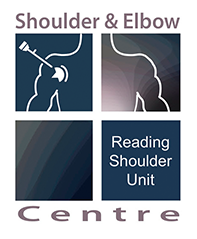Shoulder arthroplasty in relation to normal anatomy
This study examines the effect of humeral head surface replacement on the geometry of the arthritic glenohumeral joint and correlates changes to clinical outcome. Thirty-nine patients undergoing resurfacing arthroplasty were prospectively followed up clinically and radiologically for a mean of 38 months (range, 24 to 72 months). Measurements were taken from coronal radiographs by use of a validated technique. There was an estimated mean 6 mm erosion of preoperative lateral offset (coracoid base to greater tuberosity). The prosthesis reduced the humeral head radius by a mean of 3.5%. Humeral offset (greater tuberosity to center of instant rotation) increased by a mean of 5 mm (95% CI, 3.8 to 6.4; P<.01). Mean age-/sex adjusted Constant scores improved from 26 to 83 points (P<.01). The improved postoperative motion showed a nonlinear relationship with humeral offset. We conclude that surface replacement restores humeral offset and the lever arm of the deltoid and supraspinatus while otherwise mimicking individual anatomy. Function depends on adequate restoration of this lever arm without overstuffing the joint.
